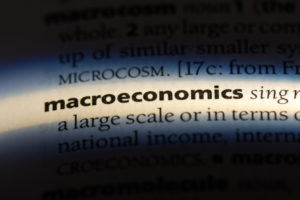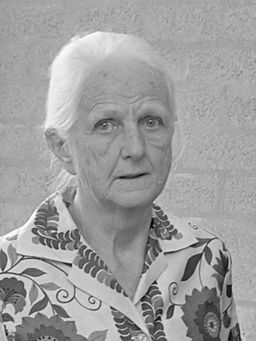
Joan Violet Robinson
1903-1983

British economist Joan Robinson was arguably the only woman born before 1930 who can be considered a great economist. She was in the same league as others who received the Nobel Prize; indeed, many economists expected her to win the prize in 1975. Business Week was so sure of it that it published a long article on her before that year’s prize was announced. It did not happen. Was the Swedish Royal Academy biased against Robinson? Many economists believe it was, but not because Robinson was a woman. Rather, her political views became more left wing as she aged, to the point where she admired Mao Zedong’s China and Kim Il Sung’s North Korea. These extreme views should not have affected her chances of getting an award for her intellectual contributions, but they probably did.
Robinson’s first major book was The Economics of Imperfect Competition. In it she laid out a model of competition between firms, each of which had some monopoly power. Along with American economist Edward H. Chamberlin, whose Theory of Monopolistic Competition had appeared only a few months earlier, Robinson began what is known as the monopolistic competition revolution. Many economists believe that most industries are neither perfectly competitive nor complete monopolies. Robinson’s and Chamberlin’s books are what led them to that belief.
Robinson’s first book and early articles show a distinctive writing style. She was clear and analytical, and she managed to put complex mathematical concepts into words.
Later in the 1930s Robinson became part of the “Cambridge Circus,” a group of young economists that included later Nobel Prize winner James Meade; Roy Harrod; Richard Kahn; her husband, Austin Robinson; and Piero Sraffa. These economists met regularly to discuss their work and especially to discuss John Maynard Keynes’s famous General Theory of Employment, Interest and Money (1936), both before and after it was published. Much of Robinson’s work published at that time, especially her Introduction to the Theory of Employment, clarifies ideas that Keynes had not made clear. Robinson was the first to define macroeconomics, which became a separate field of inquiry only with Keynes’s book, as the “theory of output as a whole.”
In 1954 Robinson’s article “The Production Function and the Theory of Capital” started what came to be called the Cambridge controversy. Robinson attacked the idea that capital can be measured and aggregated. This became the position in Cambridge, England. Across the Atlantic, Paul Samuelson and Robert Solow defended the by-then traditional neoclassical view that capital can be aggregated. Robinson won the battle. As historian Mark Blaug puts it, Samuelson made a “declaration of unconditional surrender.” Yet most economists still think that aggregating capital is useful and continue to do it anyway.
Whether or not Robinson’s gender prevented her from winning the Nobel Prize, it seems to have slowed her advance in academia. She taught at Cambridge University from 1928 until retiring in 1971, but in spite of a very productive career, she did not become a full professor until 1965. Perhaps not coincidentally, this was the year her husband retired from Cambridge.
About the Author
David R. Henderson is the editor of The Concise Encyclopedia of Economics. He is also an emeritus professor of economics with the Naval Postgraduate School and a research fellow with the Hoover Institution at Stanford University. He earned his Ph.D. in economics at UCLA.
Selected Works
Related Links
Lawrence White on the Clash of Economic Ideas, an EconTalk podcast, May 28, 2012.
David Henderson, The Nobel Factor: What Does the Prize Reward? at Econlib, April 5, 2021.
